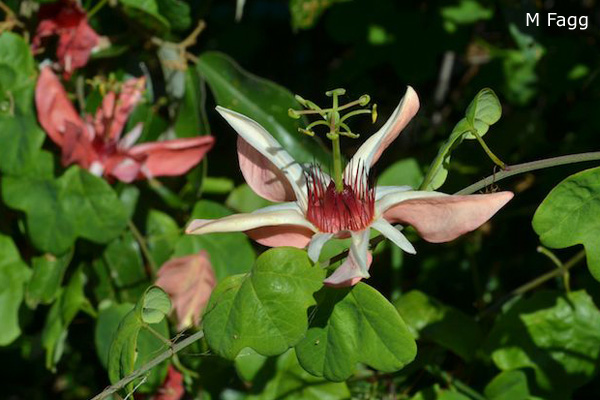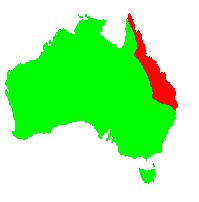General Description:
Passiflora is a well known genus because of the commercial “passionfruit”, P.edulis. The genus is mostly found in tropical areas of America and Asia. There are three Australian species but there are also about a dozen other species which have been introduced to Australia and become naturalised.
Like most members of the genus, Passiflora aurantia is a tendril climber – it develops filament-like structures from its stems which attach themselves to branches of other plants, thus providing support. Two varieties of P.aurantia are recognised as occurring in Australia: var.aurantia and var. pubescens. The latter has hairy stems and leaves and is found in the southern part of the range of the species.
P.aurantia is a moderately vigourous climber with entire or tri-lobed leaves which are dark green in colour and up to 70mm long. The red or salmon coloured flowers are seen mainly in winter and spring but some flowers may also occur at other times of the year. The flowers are 40 – 80 mm in diameter and are followed by ovoid, green fruits about 50 mm in diameter containing greyish pulp and numerous black seeds. The pulp is edible but not especially palatable.
Although P.aurania occurs in sub-tropical to troopical areas it has proven to be a reliable garden plant in more temperate areas provided it is protected from frost. It prefers moist, fairly rich soils, reasonable drainage and can be grown in full sun to semi shade.
The species is readily grown from seed which does not require any special pre-treatment. Propagation can also be carried out using cuttings of firm, current season’s growth.

Passiflora aurantia
Photo: Murray Fagg – Australian National Botanic Gardens
 Australian Native Plants Society (Australia)
Australian Native Plants Society (Australia)